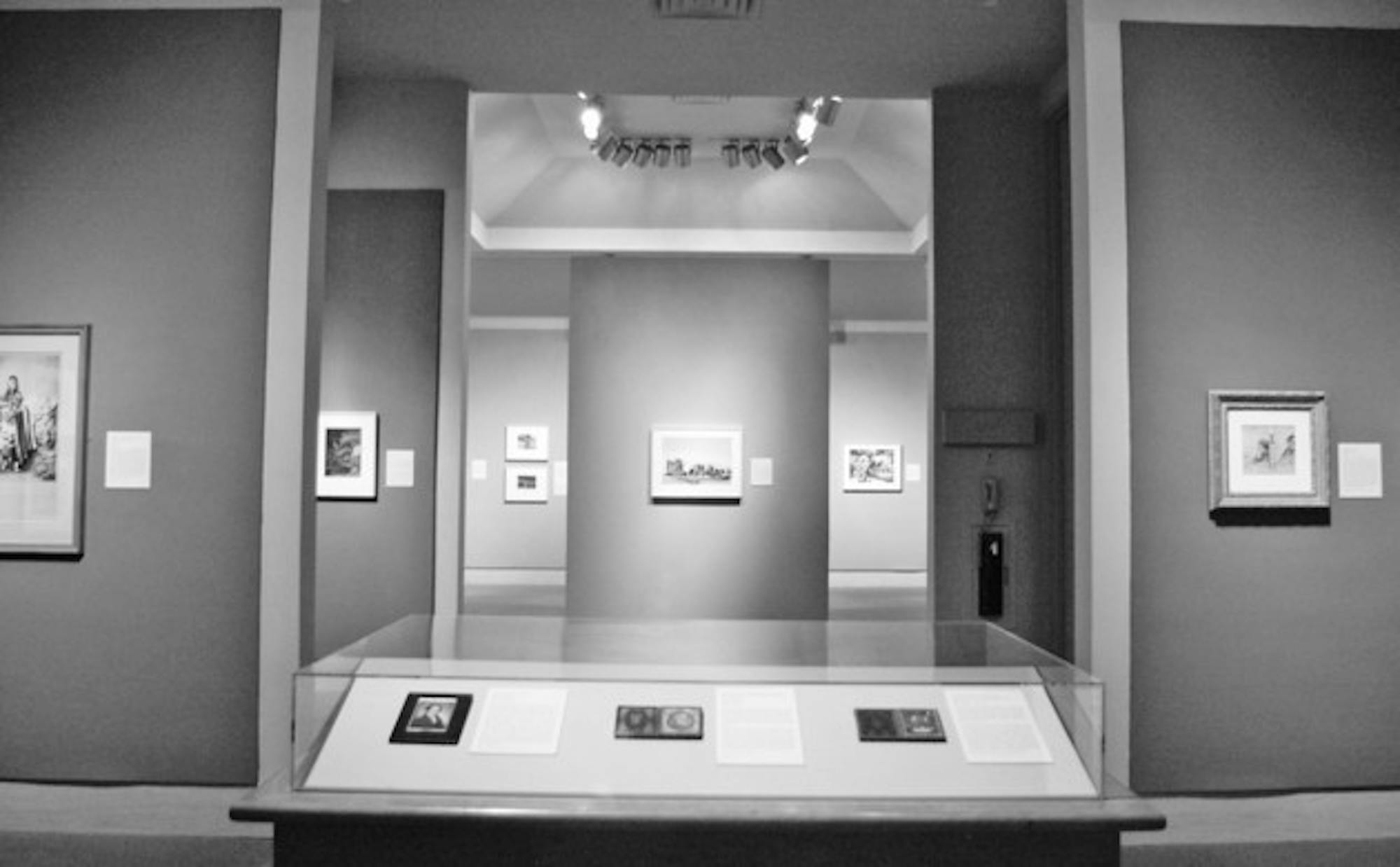Pollack later painted an oil sketch (Untitled: Bald Woman with Skeleton) which is almost certainly inspired by a panel from Orozco's mural, "Gods of the Modern World" -- you know the one, where a giant skeleton looks like he's about to receive a sexual favor and/or birth a baby mortarboard-clad skeleton.
This painting is one of two works by Pollack now on view at the Hood Museum; the other is an abstract drawing (Untitled Number 37) that also prominently features this prone, come-hither, skele-creature imagery.
This drawing by Pollack is just one of the gems in the Hood's recently opened exhibit, "American Works on Paper to 1950: Highlights from the Hood Museum of Art," which compliments the other exhibit currently on view, "American Art at Dartmouth."
The works on paper are impressive in their own right, but truly fascinating are the myriad stories and connections which each work represents.
For example: a pastel portrait of Governor John Wentworth by the famed painter John Singleton Copely was completed in 1769 -- the same year Wentworth granted Eleazor Wheelock the charter for the College on the Hill. You get the picture. It goes on and on like this.
This exhibit is a complete departure from the diverse, global displays that have dominated the museum in the past year; it is focused not only on American art, but navel-gazes even further -- American Art at Dartmouth. This is smart, because the exhibit isn't a blockbuster on its own, but the ways the works found their way to Dartmouth and the relationship of each drawing to other pieces in the collections makes this exhibit unique.
A lot of the works are visually predictable: John James Audobon's "American Buzzard" is a very pretty buzzard indeed. Several works by James Whistler are depressing. Pollack's drawing makes you wonder which side is up.
Other pieces in the show surprise, however -- Edward Hopper's "Evening Wind" is just kind of bad (though I suppose you can see hints of his later masterpieces like "Office at Night," 1941). Joseph Stella, best known for his gritty, urban, abstract work, is represented here by a pretty pastel drawing of a lotus. Isn't that nice!
A work by Stuart Davis ("Statue, Paris" 1928) is whimsical and intriguing; Mary Cassatt's "Drawing for 'Evening'" is nice; "Where the Trees are Dying" by Robert Henri is ... insert adjective here. There is name-dropping galore, but not much of the exhibit truly stands out.
A portrait of Joan Crawford by the photographer George Hurrell, however, is captivating. The silver gelatin print is a polished facescape of shadows and sunlight, perfect lips and graceful fingers. I could stand in front of Joan forever, and never realize the time.
Overall, "American Works" is lovely. There's plenty of name-dropping, not much of it jaw-dropping, but it's lovely nonetheless. The catalogue hints at works that didn't make the 1950 cutoff, by artists such as Agnes Martin, Joan Mitchell and Eva Hesse. This makes me salivate. Until then, I will be very content with this exhibit
and the life support of bi-weekly visits to the shrine of Ms. Crawford.
"American Art at Dartmouth" and "American Works on Paper to 1950" are on view at the Hood Museum of Art until December 9.




